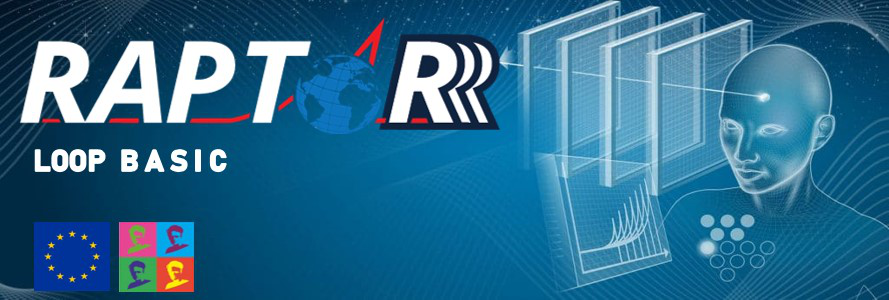Speaker
Description
Basic of biological models in Particle Therapy (PT) Treatment Planning
One of the advantages of light ions in radiation therapy (RT) treatments is their higher relative biological effectiveness (RBE) in creating damage to tumour cells, with respect to conventional RT photons. Treatment planning systems (TPS) must account for this increased efficacy in dose calculation. RBE depends on several factors including radiation quality, linear energy transfer (LET), tissue type, dose, endpoint [1]. How this is accounted for in TPS significantly affects the dose actually delivered to the patient [2].
Protons are clinically considered to be all and everywhere 10% more effective than photons (RBE = 1.1). This approximation is not always valid, particularly at the end-of-range LET elevation in tissues with a low α/β [3]. Newly available commercial software, providing inhomogeneous RBE calculation according to different models, renewed the discussion on the adequacy of a constant RBE and opened new possibilities on the clinical use of more complex modelling strategies. The topic is still controversial, being all long-term clinical data based on RBE = 1.1 and hardly translatable into a new language. Recent works include in the problem LET distribution and LET dependence of proton therapy efficacy and toxicity [4].
Radiobiological properties of carbon ions demand a 3D RBE modelling in tissues for clinical dose calculation and optimization. All Japanese centres adopted the same mixed-beam RBE model [5] for passive scattering and the modified microkinetic dosimetric model [6], for pencil beam scanning. Conversely, all European centres followed the German experience and implemented the local effect model version-I [7]. Each model in turn contains several parameters, fitted to reproduce in-vitro and in-vivo experimental data, which can be modified to drive the optimization in the desired direction. All models agree on the fact that carbon ions effectiveness increases in the distal part of the spread out Bragg peak (SOBP). Therefore, to obtain a homogeneous RBE-weighted dose distribution in the target, a lower physical dose should be delivered in the distal portion of the SOBP. The question is: “how much more and how much less?” and the answer strongly depends on the model used. Several groups studied dose deviations implied in the used of different RBE models to ease the comparison of clinical results between different centres [2, 8-10]. For the same nominal RBE-weighted dose value, the corresponding physical dose deviates differently along the spread-out and even more outside, in the entrance channel and lateral fall-off regions, with significant implications on clinical outcomes [11-13].
RBE modelling still represents a challenge in prescribing, recording and reporting dose for all light ions used in RT [14]. New TPS provide multi-model calculation and optimization options, which could support the process of future harmonization of PT treatments.
References
[1] Tinganelli W and Durante M. Carbon Ion Radiobiology. Cancers (Basel) 2020.
[2] Mein S et al. Assessment of RBE-Weighted Dose Models for Carbon Ion Therapy Toward Modernization of Clinical Practice at HIT: In Vitro, in Vivo, and in Patients. Int J Radiat Oncol Biol Phys 2020.
[3] McNamara A et al. Modelling variable proton relative biological effectiveness for treatment planning. Br J Radiol 2020.
[4] Engeseth GM et al. Mixed Effect Modeling of Dose and Linear Energy Transfer Correlations With Brain Image Changes After Intensity Modulated Proton Therapy for Skull Base Head and Neck Cancer. Int J Radiat Oncol Biol Phys 2021.
[5] Kanai T et al. Examination of GyE system for HIMAC carbon therapy. Int J Radiat Oncol Biol Phys 2006.
[6] Inaniwa T et al. Reformulation of a clinical-dose system for carbon-ion radiotherapy treatment planning at the National Institute of Radiological Sciences, Japan. Phys Med Biol 2015.
[7] M Krämer et al. Treatment planning for scanned ion beams Radiother Oncol 2004.
[8] Fossati P et al. Dose prescription in carbon ion radiotherapy: a planning study to compare NIRS and LEM approaches with a clinically-oriented strategy. Phys Med Biol 2012
[9] Steinstraeter O et al. Mapping of RBE-Weighted Doses Between HIMACe and LEM Based Treatment Planning Systems for Carbon Ion Therapy. Int J Radiat Oncol Biol Phys 2012.
[10] Molinelli S et al. Dose prescription in carbon ion radiotherapy: How to compare two different RBE-weighted dose calculation systems. Radiother Oncol 2016.
[11] Molinelli S et al. RBE-weighted dose in carbon ion therapy for ACC patients: Impact of the RBE model translation on treatment outcomes. Radiother Oncol 2019.
[12] Dale JE et al. Brainstem NTCP and Dose Constraints for Carbon Ion RT-Application and Translation From Japanese to European RBE-Weighted Dose. Front Oncol 2020.
[13] Dale JE et al. Optic nerve constraints for carbon ion RT at CNAO - Reporting and relating outcome to European and Japanese RBE. Radiother Oncol 2019.
[14] ICRU Report 93: Prescribing, Recording and Reporting Light Ion Beam Therapy.

